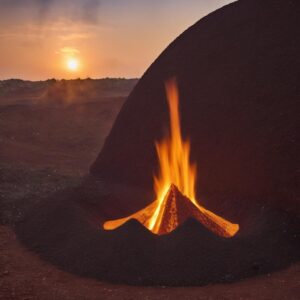HBI is the product of reducing iron ore with natural gas. This is called the direct reduction process and is an environmentally-friendly production process; a DRI plant uses natural gas which is more environmentally sound than coke. The reduction process takes place in the reduction tower. A tower is the heart of the plant. The direct
reduction process is a complex process, which, explained in simple terms, consists of the following steps:
1. Raw material iron ore pellets: Iron ore pellets – the raw material – are fed into the reactor
2. Natural gas is converted into reducing gas: Natural gas is converted into reducing gas and then injected
Reducing gas circulates in a closed system and is recycled
3. The direct reduction process: Hot-reducing gas flows through the iron ore, from the bottom to the top, according to the counterflow principle
The Oxygen content is reduced = “sponge iron” is produced
4. “Sponge iron” is pressed into briquettes (Hot Briquetted Iron)

